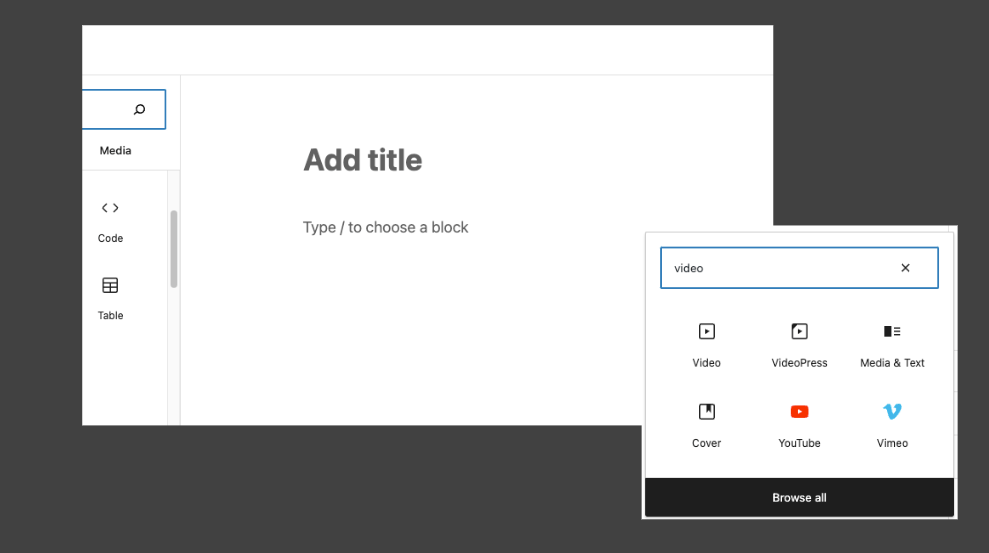Can one size fit all? No two businesses are equal. Similarly, not all WordPress websites are the same.
The design, typography, components, audience, location, language, and many other factors make every website unique. Based on the use case, WordPress’ flavor varies. Let’s talk about it in detail.

The Different Flavors of WordPress
Building a WordPress site is unique to each project besides the use cases. You can stick with WordPress core features and extend them by using Gutenberg blocks and patterns to build dynamic layouts.
With WordPress, the possibilities are endless. There are, however, some typical use-case scenarios for building a website powered by the most popular CMS. Below are the most common examples.
Blog
WordPress was a blogging platform. Over the years, it has grown into a content management system (CMS) with powerful features.
CMS
Today, large-scale business organizations use WordPress as a content management system to easily maintain their online presence.
Multisite Network
Universities use WordPress as a multisite network to manage multiple websites for different departments under their institutional organization.
Communication
Some organizations use WordPress for internal communication. For example, P2 is a communication tool for teams, based on private WordPress.com blogs. It acts as a shared inbox, a communication solution anyone can build on WordPress.
Commerce
You can build online stores with WooCommerce, sell memberships and subscriptions, and do many commerce-related things.
LMS
A learning management system (LMS) is another good use of WordPress. Creating online courses is easy with a WordPress LMS.
Things to Consider When Building a WordPress Website

Tech Stack
A website is like an online business card for your organization where people can find you and make a first impression. So it is crucial to discuss the features required on the website and choose the technologies based on them.
A seasoned web development agency can help you compare and decide on the technologies. At WebDevStudios, we start with the discovery call then the project passes through a strategy phase where technologies and tools get finalized.
Maintenance
Make sure the website redesign or new build is maintainable. Of course, you can enlist help from a vendor for ongoing development and support to fix bugs, add new features, and maintain your website. However, the tools you choose, say a page builder, should be stable and easy to maintain.
Ease of Use
Every software has to solve a problem and simplify our life. Are the tools you use solving your problems and making your workflow easier or causing more issues? Make a determination and improve as necessary.
Cost
The cost of your website development and maintenance depends on the page builder and features that you want to have. Think about the cost of paying for software licenses and maintaining them. By relying on WordPress’ core features, you can probably eliminate many unwanted fees.
For example, WordPress core comes with page builder-like features that let you drag and drop content wherever you want it. Even better, this editing experience is what-you-see-is-what-you-get, aka WYSIWYG. In other words, you know exactly what your layout will look like.
The Issues with WordPress Page Builders That No One Wants to Talk About
Unwanted Bloat
Bloat is the excess JavaScript, CSS, or DOM elements not used or needed for the web page. Historically, Elementor added several div tags to every widget, column, and section, which causes bloat.
Other page builders like Divi also have bloat. Both are now addressing the problem by reducing DOM size and asset loading to improve performance.
Vendor Lock-In
WordPress page builders are an ecosystem of their own. You have to use extra addons or modules for additional customization, which means additional licensing fees per addon.
Some page builders even have a vendor lock-in. You may be restricted to that page builder and will later need help quickly switching to another one.
Challenging to Migrate
In some cases, migrating content from a page builder is a project on its own. Page builders like WPBakery, also known as Visual Composer, add a bunch of shortcodes to content. Once you deactivate the plugin, you must convert all those shortcodes into HTML; otherwise, you can’t read the existing content.
The Learning Curve Is Different
Every page builder has its approach to building and rendering the content. For example, you can use any theme with Beaver Builder. However, Elementor allows you to create and render templates conditionally.
Divi is a theme that also comes with page builder features. On the contrary, the Oxygen page builder doesn’t require any theme to render content and uses shortcodes.
With all these differences, the learning curve for each one is steep, which could make it difficult to build your website how you want.
Limitations of Page Builders
WordPress is moving towards Full Site Editing, collaborative editing, and translation in the core software. In contrast, the page builders are going in a different direction.
Let’s say that WordPress core comes up with collaborative editing, and that feature is something you would like to have, you may not get to enjoy it because your website is using a page builder.
Open-Source vs. Proprietary Software
Open-source contributions make Gutenberg evolve faster and better than other third-party page builders. Gutenberg’s code is open to the public; anyone can test it, use it, report a bug, and contribute to it.
When a new version is released, the number of people who test it and report bugs is significantly higher than the third-party page builders.
Why Is Gutenberg Recommended?

Gutenberg is the future, allowing your website to be ready for the present and future tools and technologies. Here’s how.
Page Builder
You can build headers, footers, sidebars, landing pages, blogs, and anything you need for your website with Gutenberg. With block patterns, you can predefine the designs and make them so that your contributors, users, and editors can easily add content.
Gutenberg editor is a WYSIWYG editor. This means that what you see on the editing screen will be rendered on the frontend as you see it. No surprises.
API-First Approach

Unlike the classic editor, Gutenberg brings an API-first approach. The built-in REST API, or third-party GraphQL APIs, made managing content and taxonomies easier.
With Gutenberg, you can use WordPress as an omnichannel content hub. You can manage the content via Gutenberg and distribute it to various channels with the decoupled or headless approach.
Out-of-the-Box Performance Gains
You don’t have to worry about performance issues. Gutenberg makes it easier to build critical CSS and avoid unnecessary styles.
There are core APIs available to customize the workflow to your needs. With proper hosting setup and caching, you can stay on top of the performance game.
Scalability
Gutenberg is an open-source software. You don’t have to purchase any commercial license. If you want to add more features to your site, Gutenberg makes it easier.
With the power of core features and proper customization, and setup, your website can handle any traffic surges. You can also decouple WordPress and use microservices for the frontend.
Extensibility
Customization is another important feature when it comes to enterprise-level applications. Gutenberg comes with many core blocks that you will find useful. You can build new blocks or customize existing ones. Custom post types, custom taxonomies, custom meta fields—all of these features can work with Gutenberg.
Migration
Migrating old content from the WordPress classic editor to Gutenberg is easier. At the time of this writing, Gutenberg is mature, stable, and widely adopted. Your WordPress site should be using Gutenberg by now.
Being stuck with a classic editor or on any other page builder can cost you more in the future. Consider migrating content to the latest version and staying updated. Here is a comparison of the WordPress features versus the page builders.
| Feature | Page Builders | Classic Editor | Gutenberg |
| REST API | Have to be customized | Has to be customized | Out-of-the-box |
| GraphQL | Third-party plugin | Third-party plugin | Third-party plugin |
| Performance | Optimization required | Optimization required | Out-of-the-box |
| Migration | Takes extra effort | Easy | Easy |
| Learning curve | Steep | Easy | Medium |
| Ease of use | Medium | Easy | Easy |
| Translation | Third-party plugin | Third-party plugin | On the road map |
| Collaborative editing | Not available | Not available | Coming soon |
If you are still using the WordPress classic editor or other page builders, it is high time for you to migrate to Gutenberg. It checks all the boxes for building an enterprise-level website.
When you’re ready to have your enterprise-level website updated to Gutenberg, contact WebDevStudios.
Comments